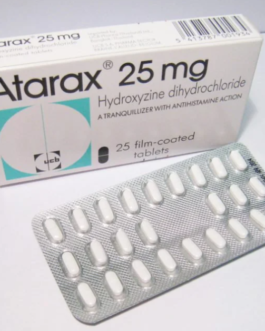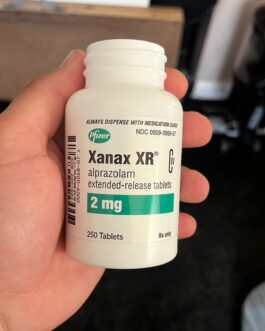Benzodiazepines Pills
Benzodiazepines are medications that make your nervous system less active. The decrease in nervous system activity makes these medications helpful for a variety of symptoms and conditions.
Many countries, including the U.S., classify benzodiazepines (sometimes known by the slang term “benzos”) as controlled substances. That means you need a prescription to get them. It’s illegal to have or obtain them (depending on the laws where you are) if you don’t have a prescription.
How do benzodiazepines work?
Your nervous system uses chemical and electrical signals to send and relay messages throughout your body. The chemical signals, known as neurotransmitters, can attach to cells with the right receptors. Neurotransmitters and receptors work much like your car keys. Neurotransmitters (your car key) can only fit into the right receptor (your car ignition). If it fits, the neurotransmitter can activate a process within the cell (starting your car).
Benzodiazepines tell your brain to release a neurotransmitter, gamma-aminobutyric acid (GABA). This neurotransmitter has a specific job: It makes your nervous system less active.
They can also be habit-forming. Because of these factors, healthcare providers use benzodiazepines cautiously.
Function
Benzodiazepines work by enhancing the effect Trusted Source of a neurotransmitter known as gamma-aminobutyric acid, or GABA.
Neurotransmitters are chemicals that communicate messages between brain cells. These messages can have either a stimulating or a calming effect. GABA is a neurotransmitter that sends calming messages to the body.
When a person feels anxious, overstimulation occurs in the brain. When people take benzodiazepines, the brain will send messages to counter this overstimulation. This activity can reduce the symptoms of anxiety.
-
- Benzodiazepines Pills, Xanax Pills
Alprazolam 2mg cinfa
- Price range: £120.00 through £760.00
- Select options This product has multiple variants. The options may be chosen on the product page
-
- Benzodiazepines Pills
Alprazolam mylan 2mg
- Price range: £120.00 through £500.00
- Select options This product has multiple variants. The options may be chosen on the product page
-
- Benzodiazepines Pills
Diazepam 5mg
- Price range: £150.00 through £1,500.00
- Select options This product has multiple variants. The options may be chosen on the product page
-
- Benzodiazepines Pills
Frontin 1mg
- Price range: £100.00 through £400.00
- Select options This product has multiple variants. The options may be chosen on the product page
-
- Benzodiazepines Pills
Lorazepam 2.5mg
- Price range: £200.00 through £960.00
- Select options This product has multiple variants. The options may be chosen on the product page
-
- Benzodiazepines Pills
Lyrica Capsule 25mg
- Price range: £240.00 through £980.00
- Select options This product has multiple variants. The options may be chosen on the product page
-
- Benzodiazepines Pills, Xanax Pills
Xanax 1mg
- Price range: £120.00 through £550.00
- Availability: In Stock 100% Anonymity & Discreet shipping Brands: Alprazolam
- Select options This product has multiple variants. The options may be chosen on the product page














